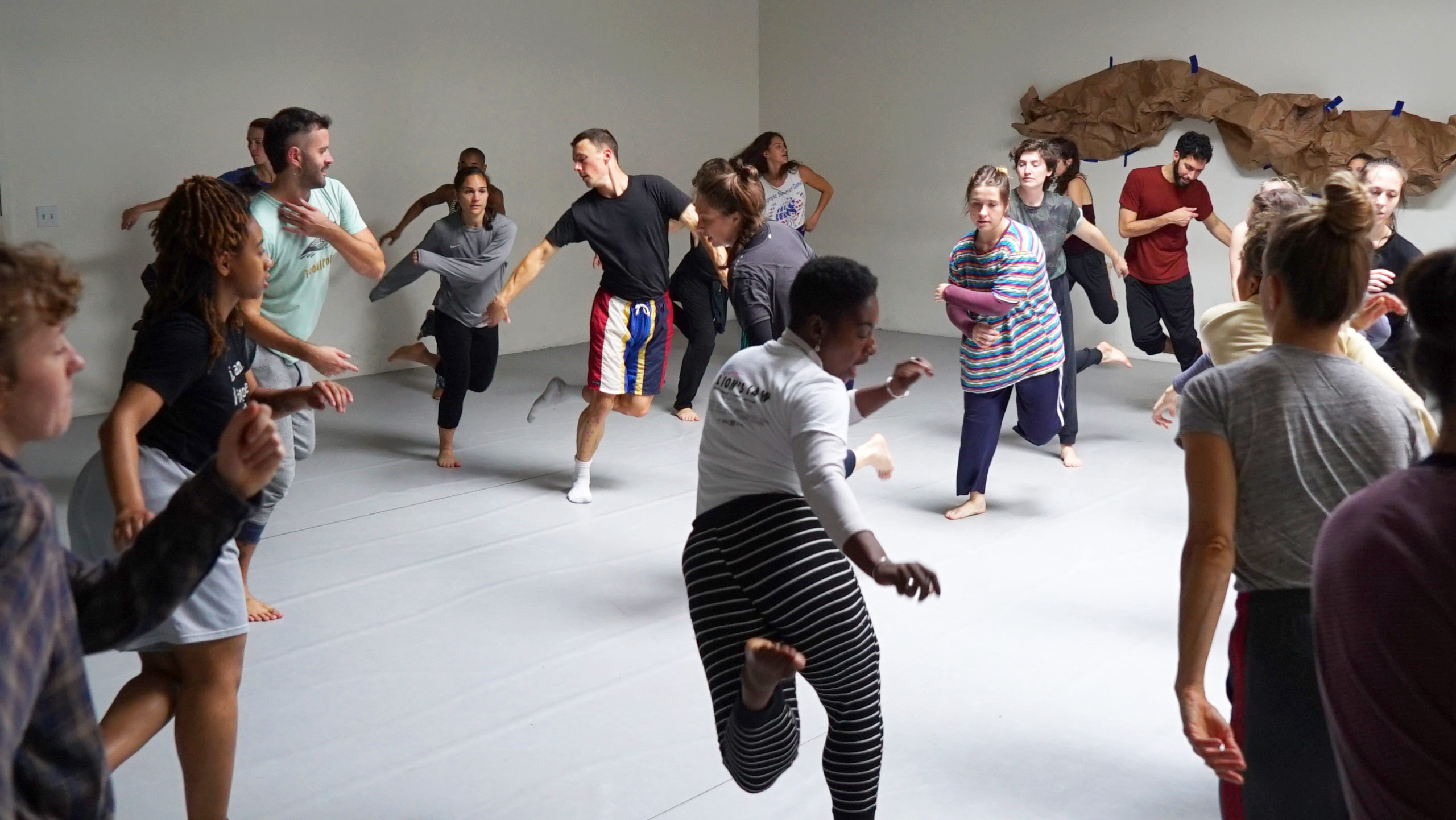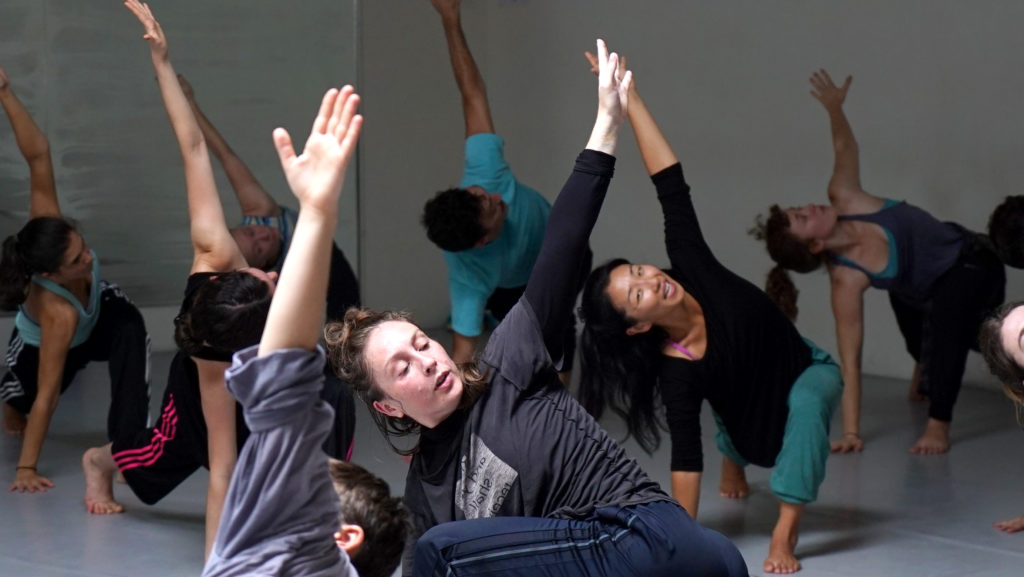
When Kendra Portier was training as a professional dancer in New York City, she made a life-changing discovery: The classes she was most enjoying were with teachers who “were curious about what they were doing, and delighted in that curiosity,” she says. “And then they built ideas of movement around that.”
“And then I was like, ‘Oh, that’s what all these codified techniques are, too,’” she says. “But they just get more and more codified away from that singular person.” The idea that “techniques are just a perspective on moving from one body that might resonate with other bodies” inspired Portier to begin her own teaching practice based on how she liked to move.
She eventually became a go-to teacher at New York City studios, such as Mark Morris Dance Center, Peridance and Gibney Dance Center, known for her sweaty, lively classes and her slightly kooky but deeply insightful imagery (for more softness in plié, think of “mintiness” in the knee joint, she suggests).
Portier, now an assistant professor at the University of Maryland School of Theatre, Dance, and Performance Studies, focuses on athletic, functional movement in her classes and dives deep into “why we are doing what we’re doing, and what we’re trying to get from it.”

But just because her classes are highly intentional doesn’t mean they’re overly serious or heady. In fact, one of her “current obsessions” is a warm-up series she calls “aerobics,” which involves loud, fun music and exercises partially inspired by the 1980s. One of these is a sequence she calls “sand,” which functions as a more full-bodied take on tendus. (“Tendus are not interesting enough for me to do for 20 more years,” she quips.)
Sand, which builds from a step-touch and involves “licking the floor” with the feet to move imaginary sand on the back diagonal, works for a variety of age and skill ranges, she says, as well as purposes: It’s a full-body warm-up, but it can also build community and camaraderie with its elements of freedom and repetition, and is simple enough to allow students to make their own choices within it.
“I wanted something that my sisters and my brother who are not dancers could come do, but that a super pro could do as well and find interest and value in,” she says. Don’t let the step’s simplicity fool you: Portier tailor-made it to prepare students for her multidirectional, off-balance movement by activating the hamstrings and thighs, getting dancers used to pushing through the floor and sequencing from the feet up through the pelvis.
“Sometimes I’ll use this series and then pull out an idea to highlight or track as we move through class,” she says. “Other times, I’ll just be like, ‘Let your body be smart, because it is so good at making connections.’”
“Sand” Step by Step:
Step 1: Start with a simple step-touch, feeling bounciness in the legs and relaxing the upper body.
Step 2: Begin to use the feet to brush the “sand” on the floor behind the standing leg on a long diagonal, “carving out deeper ruts into the floor and exfoliating the feet.”
Tip: Think about articulating the whole foot on the floor, as if you have “big, wide flipper feet,” says Portier. “Can you actually feel the surface area of your heel? Can you feel the surface area of your metatarsals, your arches?” Be sure that this articulation doesn’t stop at the ankle, but sequences all the way up through the leg—Portier suggests thinking of the legs as two additional spines that can undulate.
Step 3: Continuing to “move the sand” with the feet, lean slightly forward and begin to gently twist towards the back leg each time you shift your weight, “allowing the heart to move around the spine and the sternum to soften,” says Portier. Deepen your plié, building more heat in the body. “The more sand that you can move past the center line behind you, the better,” says Portier.
Tip: If you’re struggling with maintaining a deep, soft plié, Portier recommends changing your perspective: “It’s just getting slightly taller, and then slightly shorter,” she says.
Step 4: Add the coordination of the arms, either allowing them to sway as they gently cross the centerline of the body or using them to push air from one side of the body to the other.
Tip: Don’t worry about looking “cool,” says Portier, or even staying on any particular rhythm: It’s all about getting the body warm and sequencing from the feet up to the pelvis.
Step 5: Use the exercise not just to warm up your body but to “warm up your agency,” says Portier, making choices about what you need, whether that’s returning to the step-touch to catch your breath or turning the intensity up or down.
Watch the full-length video below:





